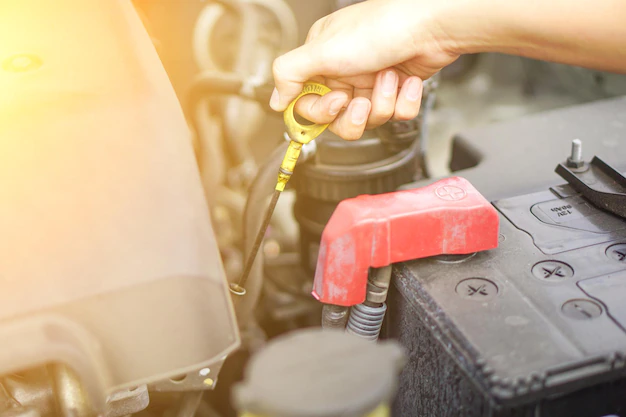Checking your car’s transmission fluid is an important part of routine maintenance, but did you know that you don’t need a dipstick to do it? That’s right in many newer cars, the transmission fluid dipstick has been replaced by a sealed system that doesn’t require regular checking. However, there are still some ways you can check your transmission fluid level without a dipstick. Here’s how.
If your car was built after the year 2000, it likely has a sealed transmission. This means that the transmission fluid is not exposed to the atmosphere and doesn’t need to be checked as often. However, it’s still a good idea to check your transmission fluid level every few months or so.
To do this, start by putting your car on a level surface and running the engine for a few minutes to warm up the transmission fluid. Then, locate the fill plug on the side of the transmission. The fill plug will usually have a hexagonal head.
Next, use a socket wrench to remove the fill plug. Once the plug is removed, insert a finger into the opening and feel around for the level of the fluid. If the fluid is at or near the level of the fill plug, then your transmission fluid is at the proper level. However, if the fluid is below the level of the fill plug, then you’ll need to add more transmission fluid.
To add transmission fluid, locate the transmission dipstick (this will usually be located near the engine dipstick). Remove the dipstick and slowly pour transmission fluid into the opening until it reaches the “full” line on the dipstick. Then, re-insert the dipstick and screw on the fill plug.
If you’re unsure about how to check your car’s transmission fluid level without a dipstick, consult your owner’s manual or take it to a professional mechanic for assistance.
What Are The Most Common Causes Of Transmission Failure?
The most common causes of transmission failure. By knowing the most common causes of transmission failure, you can take steps to prevent it from happening to your vehicle. The most common causes of transmission failure are worn-out gears, fluid leaks, and overheating.
Worn-out gears are the most common cause of transmission failure. When gears get worn out, they can no longer properly engage with each other, which causes the transmission to slip. This can lead to a loss of power and eventually, the transmission will fail entirely.
Fluid leaks are another common cause of transmission failure. When transmission fluid leaks, it can cause the gears to slip and eventually fail. Overheating is another common cause of transmission failure. When the transmission overheats, the fluid can break down and cause the gears to slip.
If you think your transmission might be failing, it’s important to have it checked by a qualified mechanic as soon as possible. Transmission failure can be expensive to repair, so it’s best to catch it early before it causes more damage.
How To Check Transmission Fluid Without A Dipstick
If your car doesn’t have a dipstick, you can check the transmission fluid level by removing the fill plug. The fill plug is usually located on the side or bottom of the transmission. Once you’ve located the fill plug, use a ratchet and socket to remove it.
Once the fill plug is removed, you should see a stream of transmission fluid coming out. If the stream is steady and consistent, that means the fluid level is full. If the stream is intermittent or there is no fluid coming out at all, that means the fluid level is low and you’ll need to add more.
Adding Transmission Fluid
If your transmission fluid is low, you’ll need to add more. The best way to do this is by using a funnel to pour the fluid into the fill hole. Once you’ve added the desired amount of fluid, replace the fill plug and tighten it with a ratchet and socket.
It’s important to check your transmission fluid level regularly to prevent transmission failure. If you notice that your fluid level is low, add more as soon as possible.
By following these steps, you can easily check your transmission fluid level without a dipstick. Regular maintenance will help keep your transmission in good working order and prevent costly repairs down the road.
Conclusion:
Your car’s transmission is an essential part of its operation, so it’s important to keep an eye on the fluid level and make sure it stays topped up as needed. In many newer cars, there is no dipstick but that doesn’t mean there’s no way to check the fluid level! By following these steps, you can easily check your transmission fluid without a dipstick and keep your car running smoothly for years to come.
You may also like the following:


